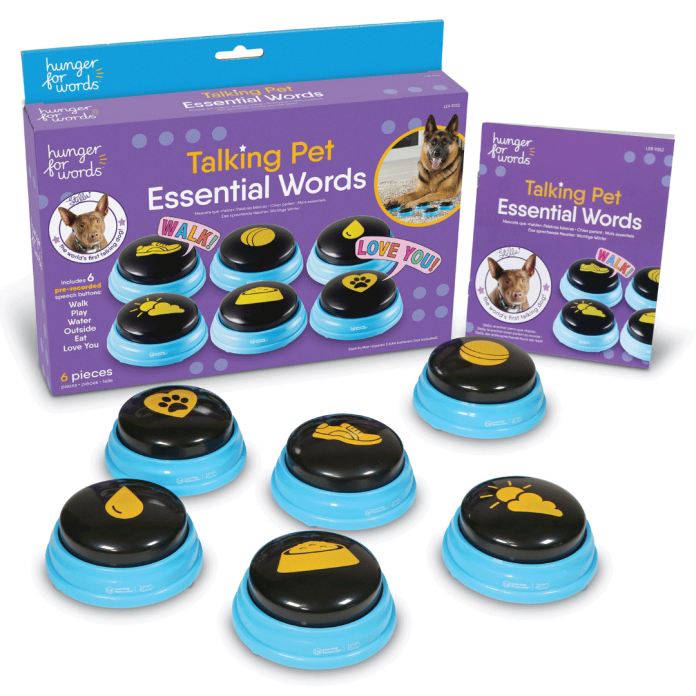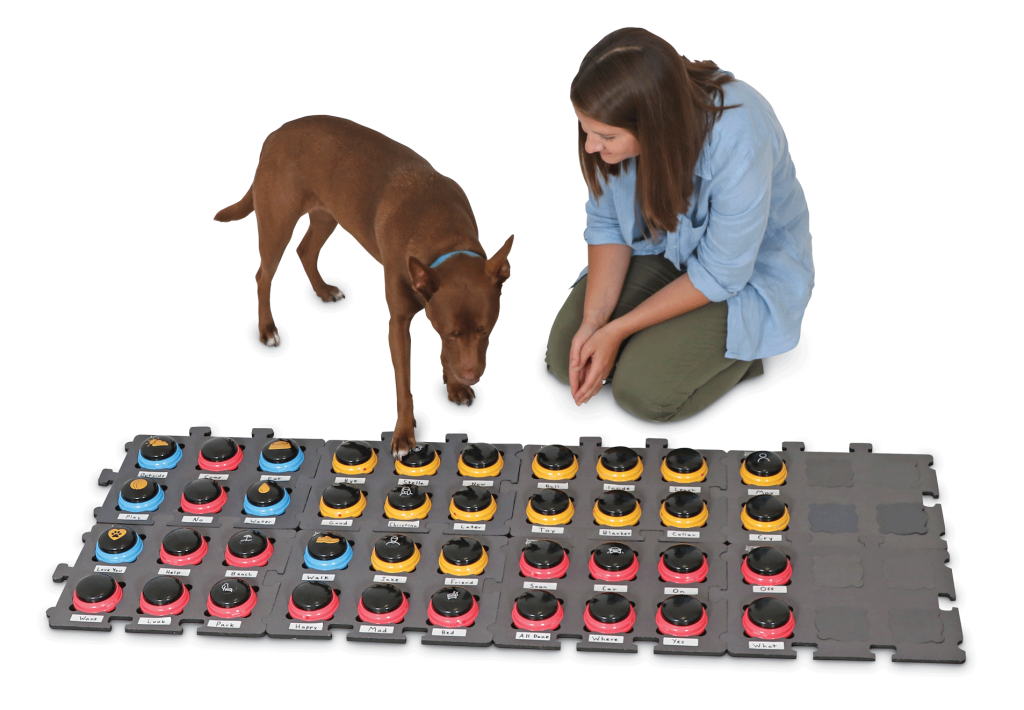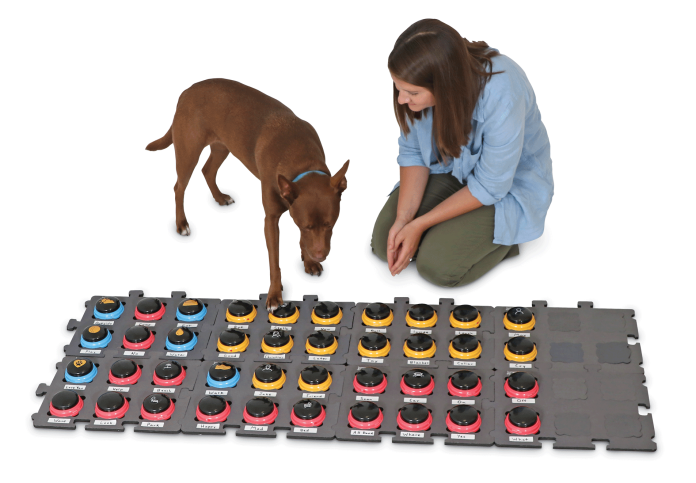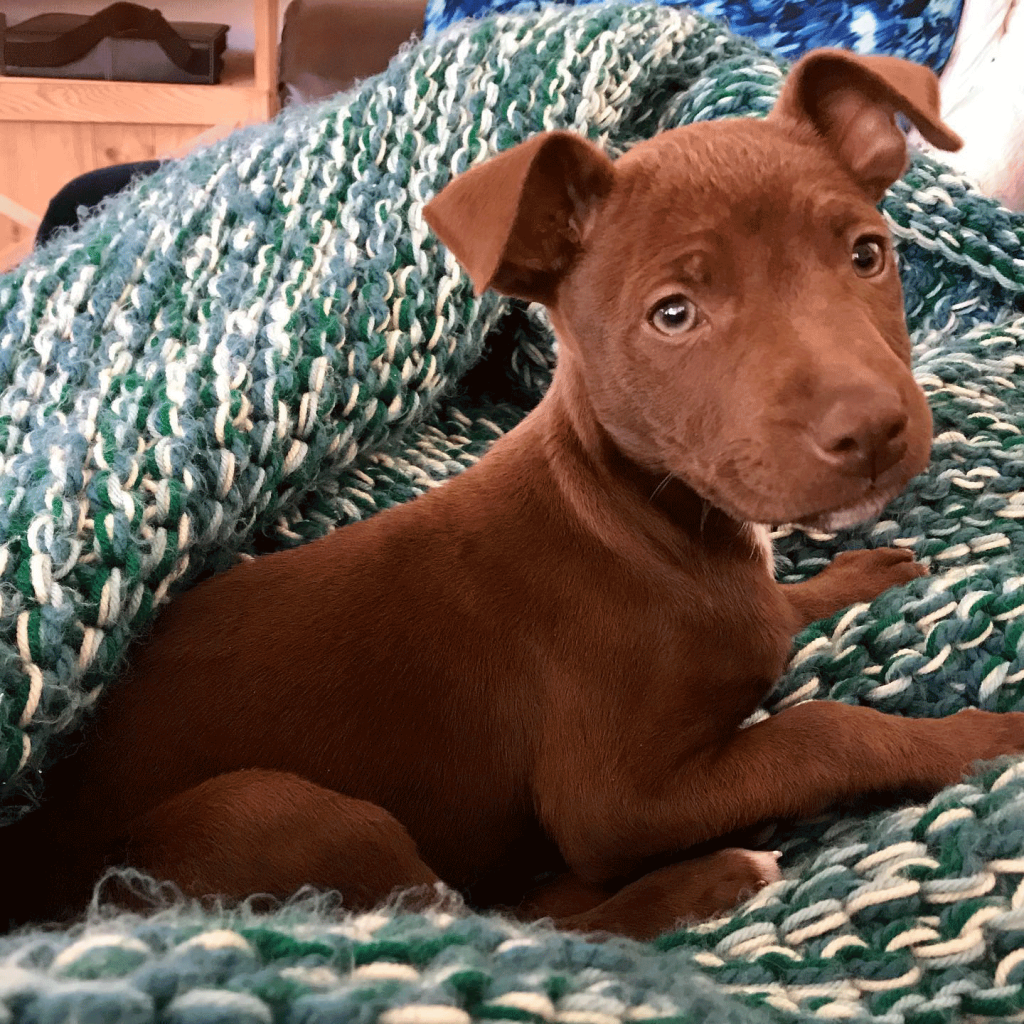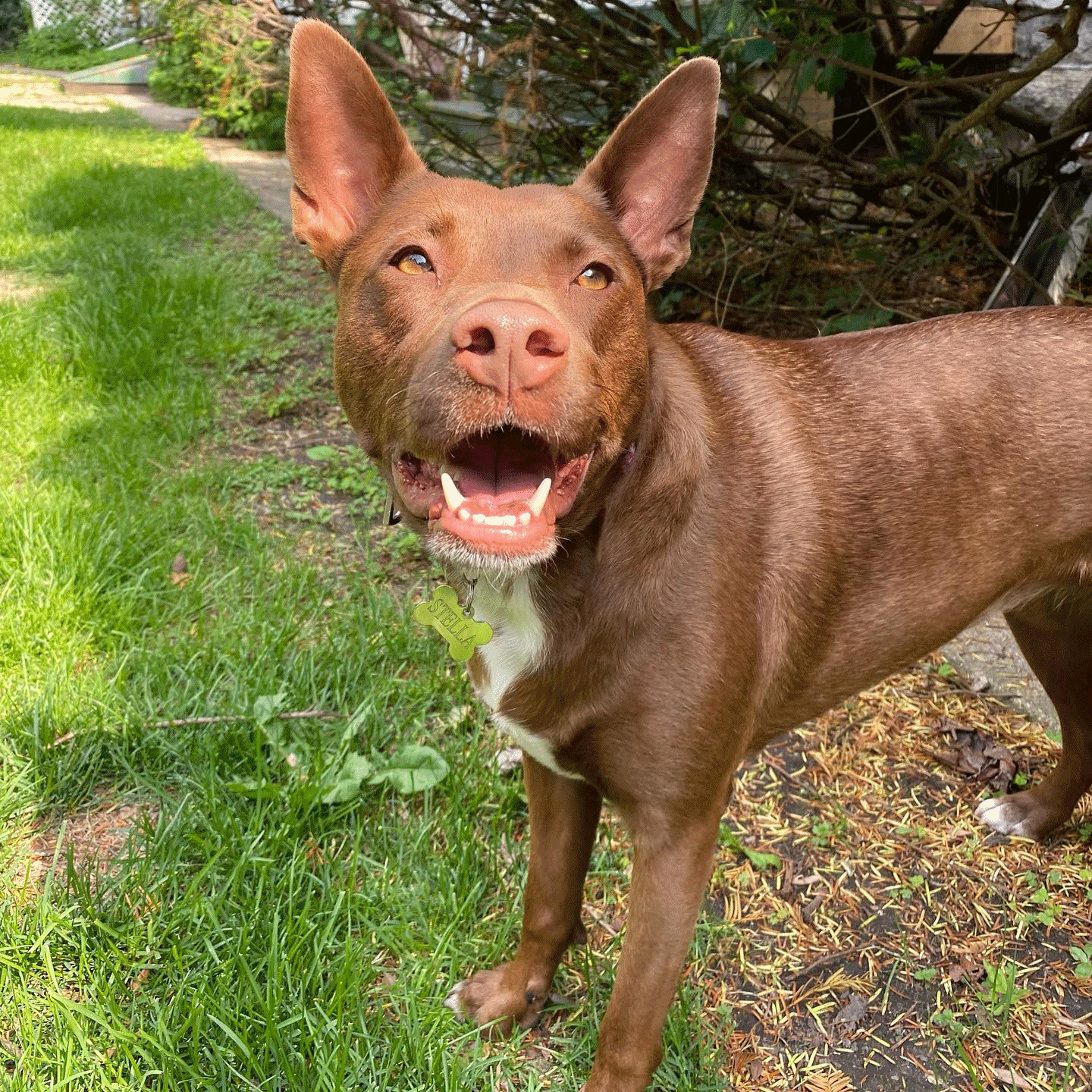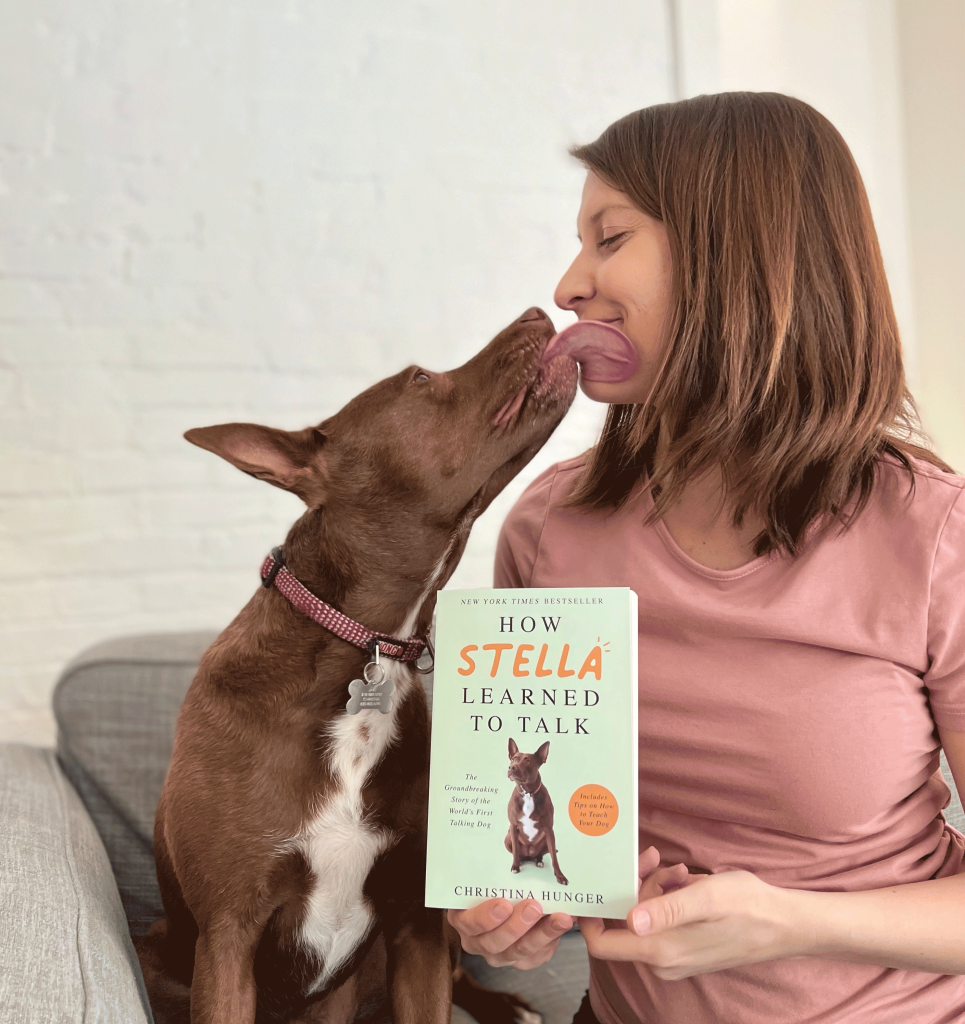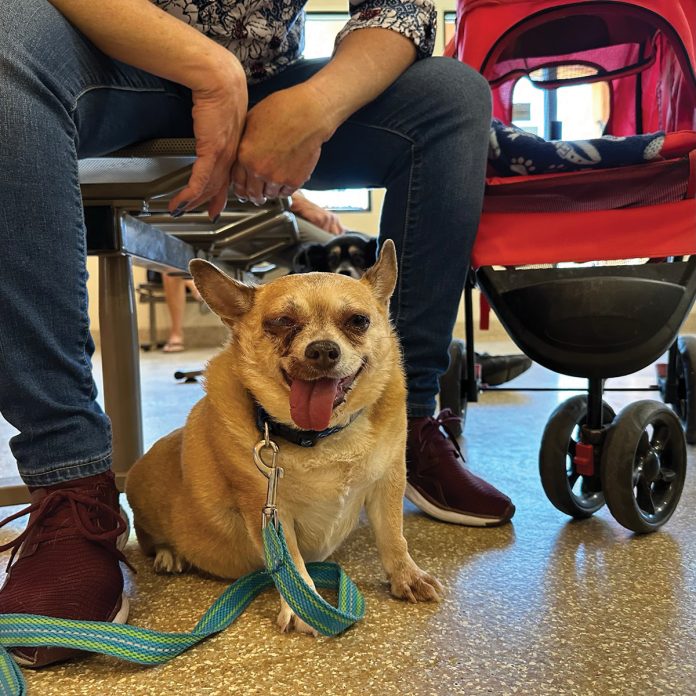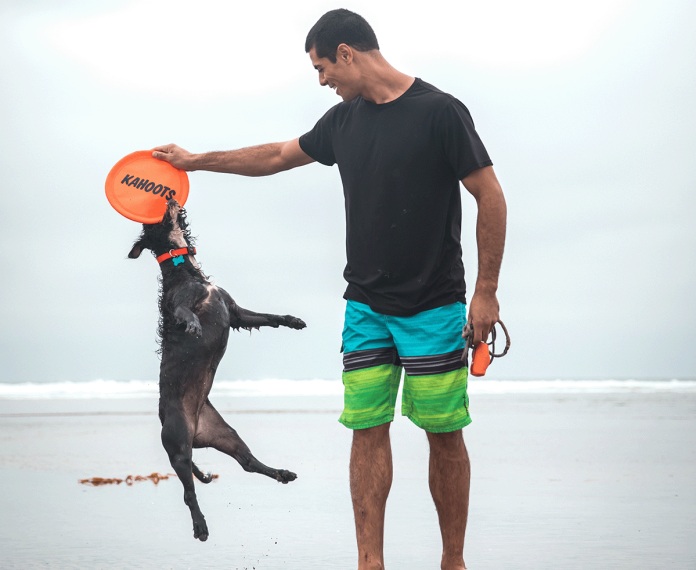It’s that time of year again, when grandchildren visit, families decorate with sparkling lights and dangling ornaments, and the home fills with wonderful aromas of baking and cooking special treats we gather to enjoy. But imagine the scene from the point of view of your pet. New objects appear in their comfortable space. Their humans’ routine (and thus their own routine) is often severely disrupted, as we leave for hours to shop, strange people enter our homes, and amazing new aromas fill the air. Our pets may find this simultaneously distressing and terribly tempting! This article hopes to remind you of some holiday-related risks to our pets, and ways to include them in our festivities. Threats and challenges to dogs and cats (as well as pet birds, rabbits, and other animals) can be grouped into three basic categories:
- Things to eat, or non-food items that might be eaten
- Physical hazards
- Emotional distress factors
Things to Eat
Since the first is the most obvious, and most common, I’ll start there.
- Unfamiliar food items are an all-too-common problem for pets. Dogs, in particular, are skilled at sniffing out forbidden foods, but they don’t always know what to avoid or when to quit! Cats seem to be irresistibly drawn to chew on certain dangerous objects as well.
- Poultry or pork bones can create a choking hazard or risk for intestinal perforation or blockage. Also, they may be wrapped in packaging that smells just like the meat itself, to a dog. Keep the ham and turkey not just out of reach but securely covered or otherwise secured! The microwave is a good place to store a turkey while it thaws.
- Chocolate is a well-known toxin for dogs, and a common wrapped present—you might not even realize it’s under your tree! But a dog, relying on scent, is harder to fool. Unfortunately, most dogs don’t know when to quit! Aside from the widely publicized harm to the kidneys from the theobromine compounds in chocolate, it’s also an extremely rich, high-fat meal. Veterinarians see far more cases of digestive upset from chocolate than actual poisoning.
- Be wary of “diet” candy and other artificially sweetened foods. Many contain xylitol, an artificial sweetener that is deadly poison for a dog.
- Gastrointestinal distress is very common around the holidays. While most of the turkey and trimmings we enjoy are okay in small amounts for MOST pets, moderation is key. A small portion of holiday dinner, perhaps without gravy and pie, can safely be offered IF your pet has a reliable digestive system and is not allergic. Just remember: if it’s not good for you, don’t feed it to your pet, no matter the occasion. And if they can’t handle new foods as a general rule, don’t feed it at the holidays either.
Non-Food Items
Non-food items (which pets ingest with remarkable frequency) are often equally hazardous, but for different reasons.
Christmas trees represent all sorts of non-food items that can potentially endanger your pet if ingested. For example—
- Flocking is a toxic chemical.
- Trees are sometimes treated with preservatives that can be poisonous.
- Cats and birds will be tempted to climb a tree placed in their space (I mean, who wouldn’t?). With the animal on its branches, the tree can become unbalanced and topple over!
- Water in a tree support stand can develop scum or mold. Dogs, who seem to love drinking from stagnant puddles, could possibly get sick.
- The needles that fall off a live tree can pose a hazard, getting into eyes and ears and irritating the mouth or pharynx (back of the throat).
- Cats, and especially birds, are attracted to shiny objects like glass balls and tinsel.
- Many puppies, dogs, cats, and other animals love to chew on electric cords. Don’t let your pet get a nasty shock!
- Tinsel and ribbon are highly attractive to cats. But once Fluffy starts chewing on it and a piece goes down the throat, she can’t simply stop swallowing—chances are, the whole length is going in! These items can create what’s called a linear foreign body. That is, the intestine bunches up along the stringy bit, like a drawstring. Unfortunately, that becomes a surgical emergency if recognized in time. Unrecognized, it can easily be fatal.
What Can You Do?
- Consider an artificial tree instead. Plastic or even silk trees aren’t entirely safe—some dogs and cats will chew off pieces and swallow them. But they are considerably less appealing to most pets than a live tree.
- If you must have a large tree, secure it to the wall (also good in case of an earthquake!).
- Use aluminum foil around the base. Most pets HATE the way foil crackles underfoot! If you’re tech savvy, a motion-
- triggered alarm can also be effective.
- Likewise, wrap any electric cords with foil or coat it with a bad-tasting substance such as laundry detergent or products marketed for this purpose.
- Avoid adding tinsel to your tree.
- If you have ornaments made of paste or dough, hang these high enough that the pets can’t reach them. To a dog, it might smell like food. And if you are stringing popcorn or cranberries, keep those out of reach as well. Those strings, like ribbon or tinsel, can cause a deadly intestinal blockage!
Emotional Distress Factors
Stress is an often-overlooked problem for pets during the holidays. We humans tend to become “stressed out” making plans and may wind up inadvertently neglecting the emotional needs of our pets. We do this with disruptions in their feeding or exercise schedules, increased time away from home (sometimes at odd hours), or even traveling and leaving pets in the care of others. Even dogs who accompany their owners everywhere may struggle with holiday upheavals.
Our companions also pick up on our own emotions. When we’re feeling pressure or anxiety, they are fully aware. But they don’t understand the cause of our stress, which only amplifies their own. Knowing this, we are tempted to offer extra treats, typically unfamiliar food items, which may disturb a stomach already upset by this anxiety. Veterinarians see the resulting effects in the form of acute colitis (diarrhea that can result in accidents and may contain blood) and also gastroenteritis and pancreatitis, both of which can be severe and even life-threatening.
Help Your Pet Relax
Obviously, we don’t set out to make ourselves anxious or stressed, or even depressed. So what can you do to help your pet?
First: Plan some down time. Schedule time to meditate, deep-breathe, or otherwise calm yourself and spend some time playing or cuddling with your pet—whatever THEY enjoy or seek out. Make it “normal time,” to help reassure both of you that life is still good.
Second: Include your pet in safe ways. Give a new toy or other distracting item before engaging in activities like wrapping packages or trimming the tree, or even sitting down to a big group dinner. Another strategy is to engage them in vigorous play early in the day, so they are not only satisfied that you still love them but are also a little tired already. (This can be a really good task for a visiting grandchild of the right age!) Do provide treats, just make sure they are safe and preferably familiar.
Third: If anxiety is a known issue for your pet, check with your vet about a medication or supplement that might help them feel calm—either for a single evening or for the whole season, depending on their specific needs.
Finally: Never surprise someone with a pet as a holiday gift. If you have made sure the intended recipient wants a pet, consider wrapping a photo of it for the gift exchange, then arrange to collect the actual animal a day or two after the big day.



